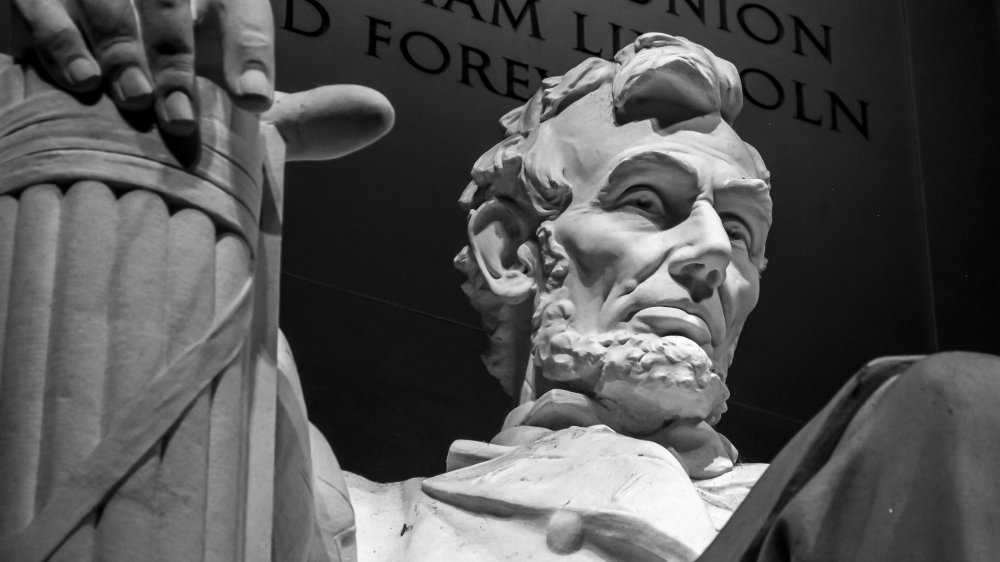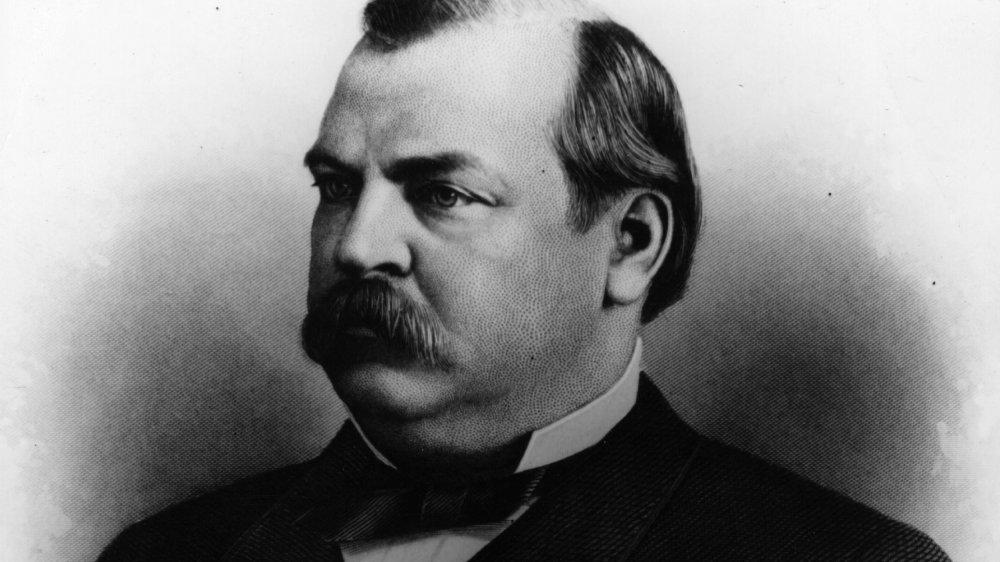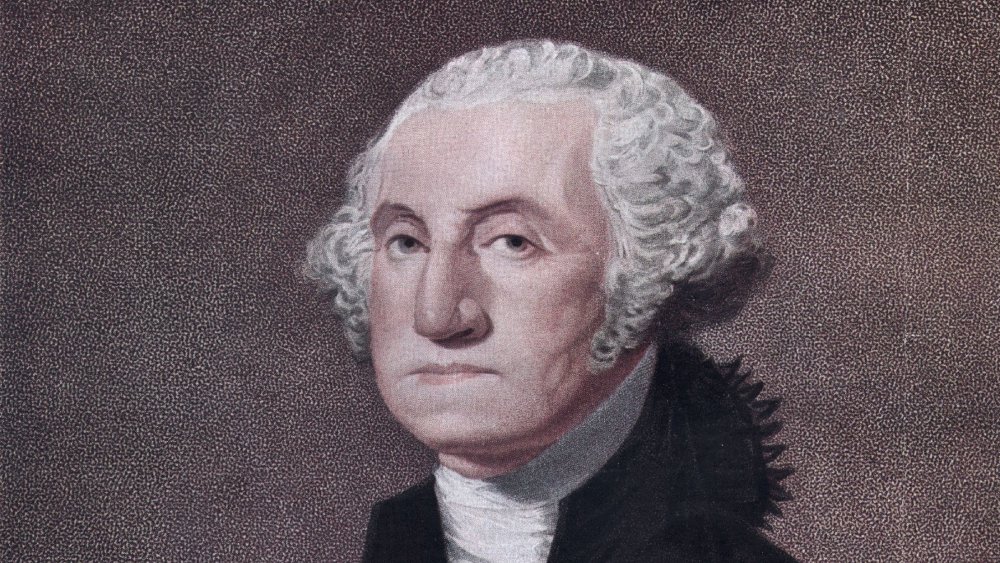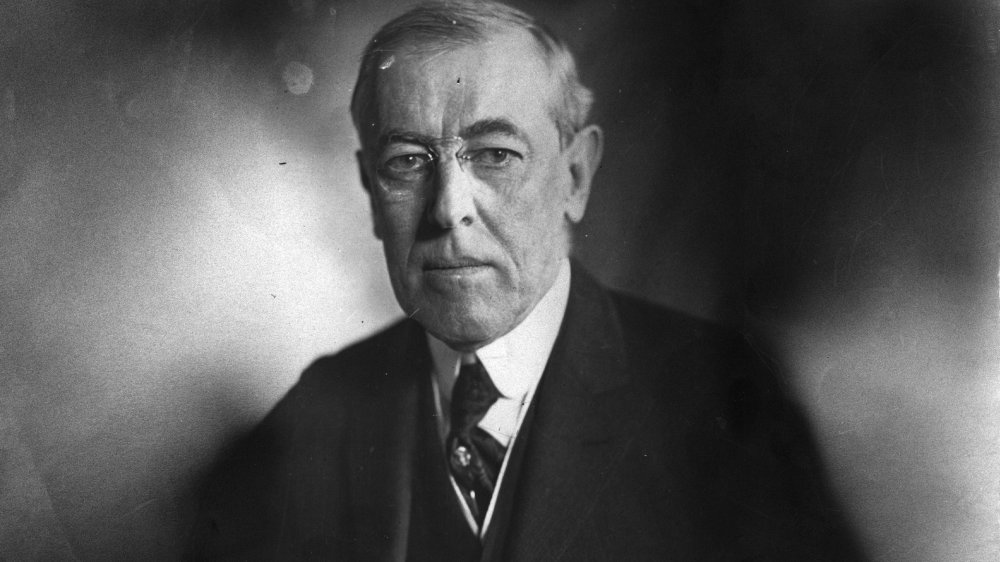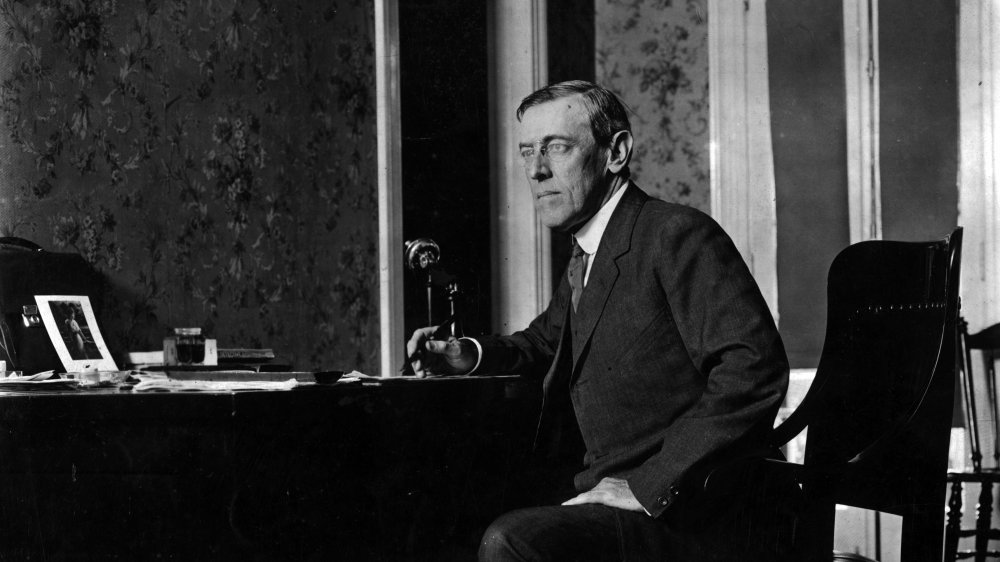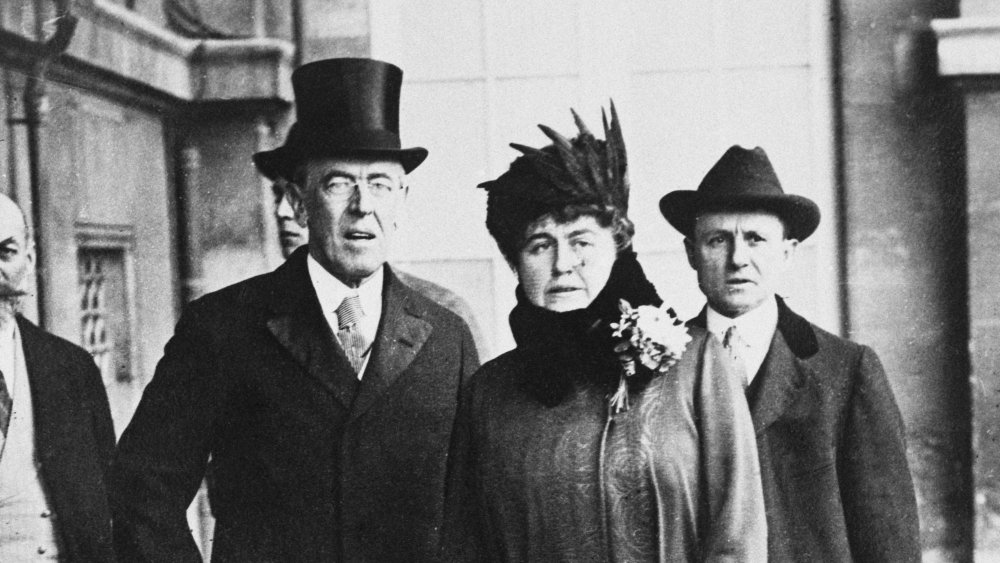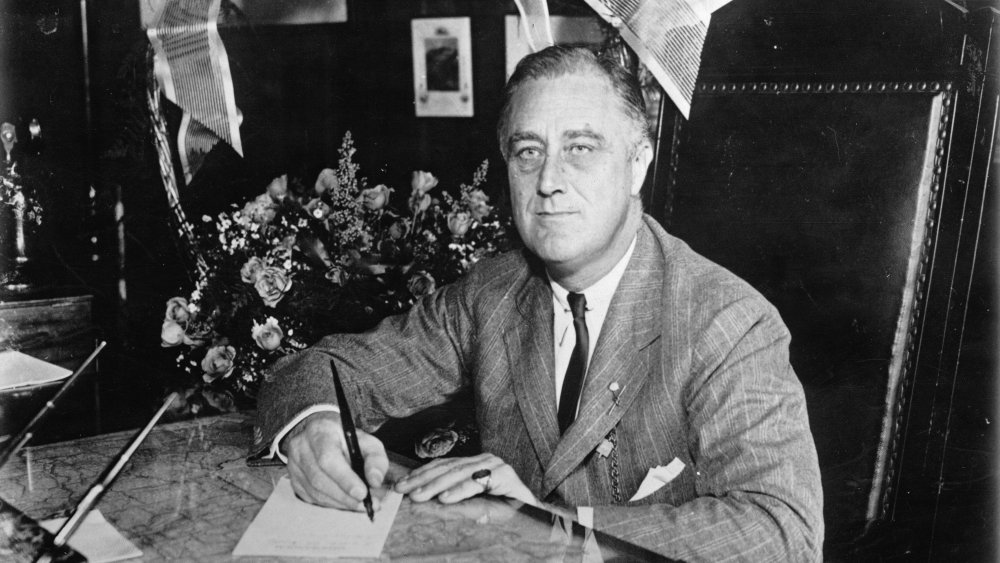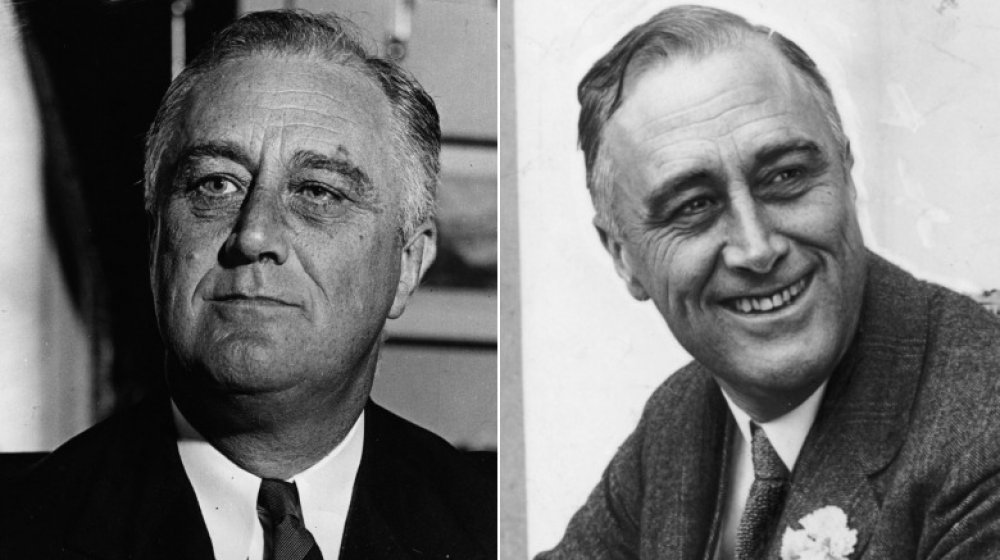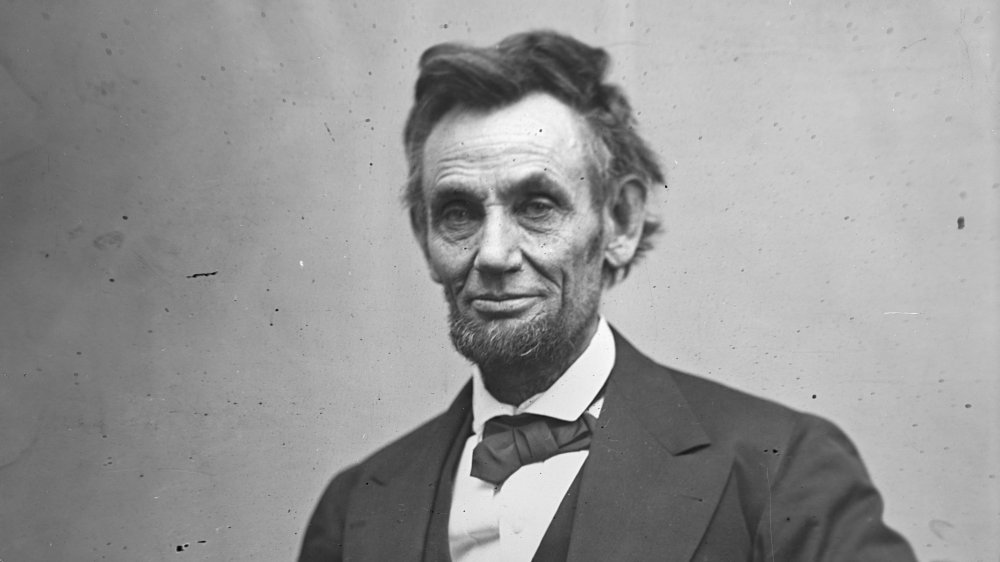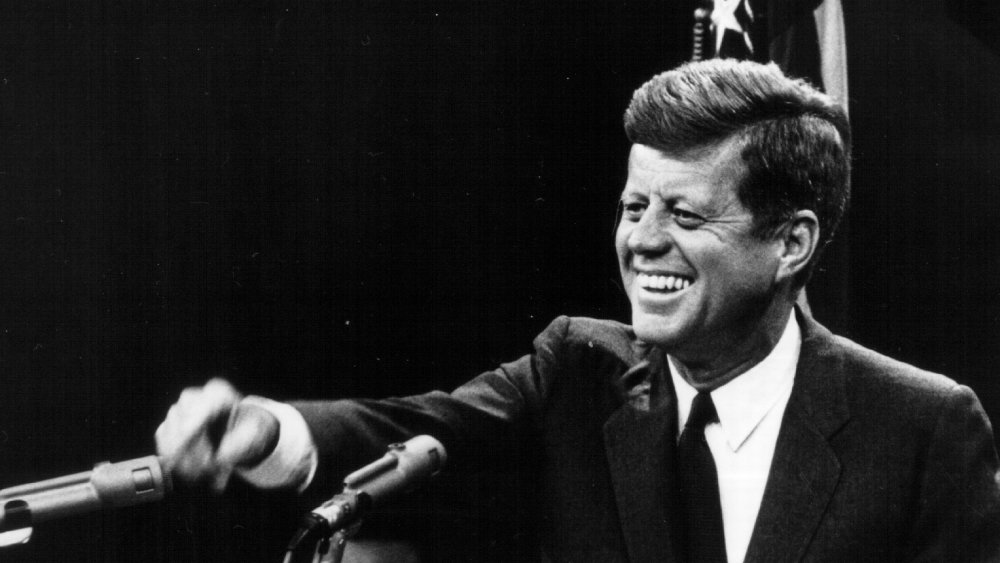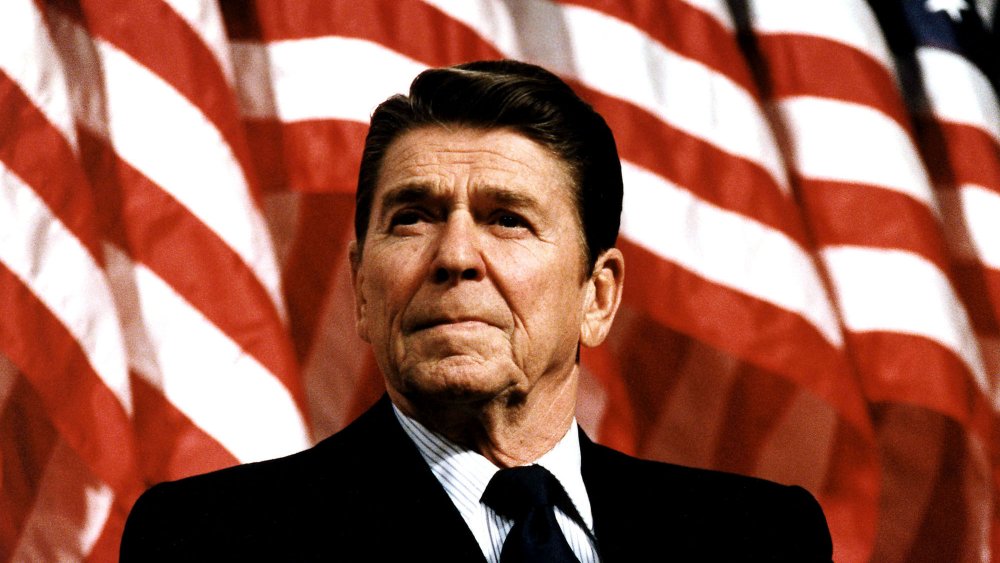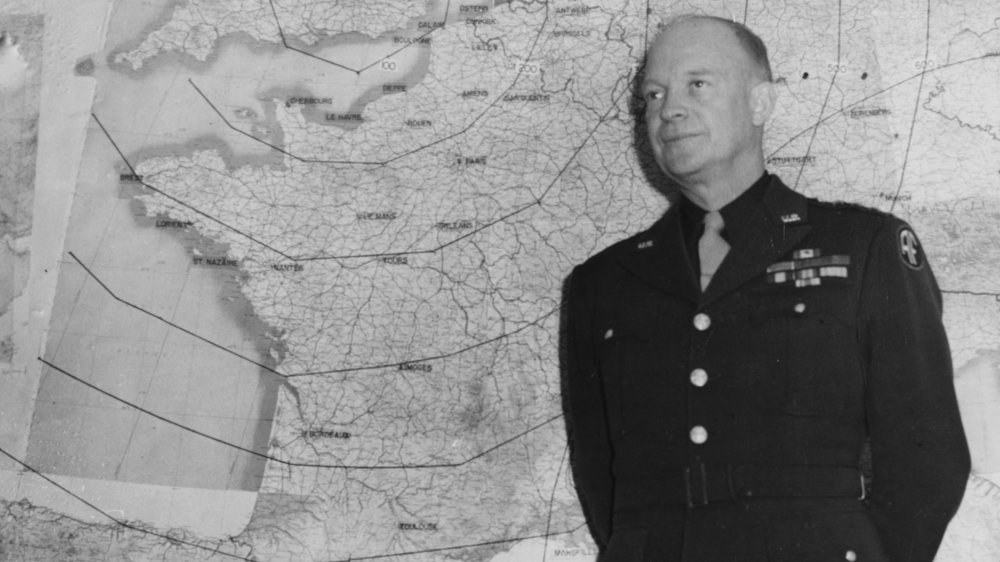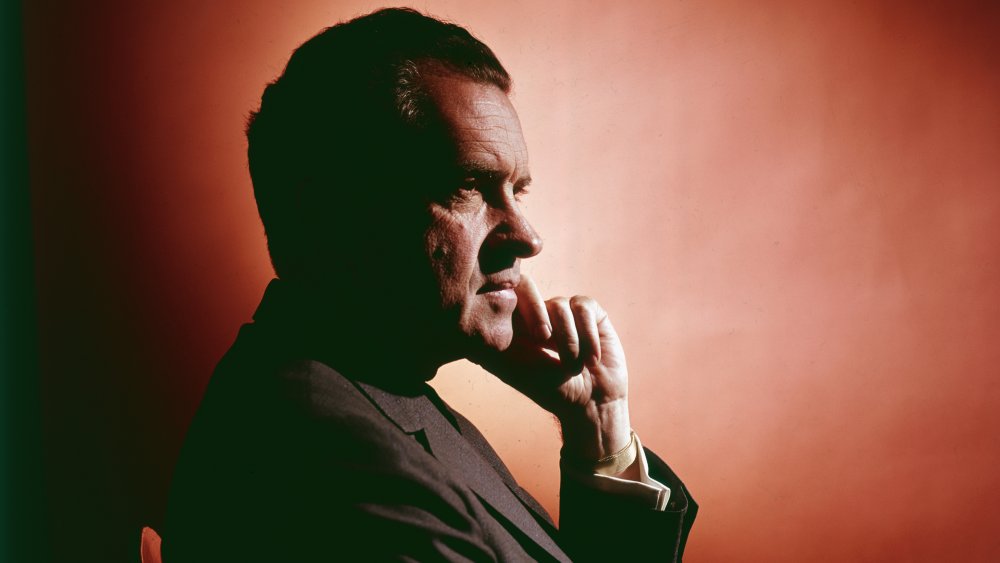Presidents Who Hid Their Poor Health From The Public
Social media and 21st century communication is a weird thing. We're not just in touch with our friends, family, and loved ones 24/7, but it also means that we have unprecedented access to the lives of the rich, the famous, and the powerful, and that certainly extends to the President of the United States.
Take President Barack Obama. Who didn't appreciate knowing that he had a weakness for pie? Did we need to know that? Not really, but it made one of the most powerful people in the world even more relatable. According to LiveScience, that kind of information sharing is a relatively new phenomenon, and in past decades, people weren't privy to that kind of thing.
Before the internet and media went and made the world a whole lot smaller, presidents were able to hide a lot — including major illnesses and even surgeries. And many times, they wanted to. Many were living at a time when illnesses of any kind were a sign of weakness and discussing health problems openly was just unthought of. Who, after all, would want someone with compromised health running a country? So these presidents stayed quiet, and hid a lot from the public.
Grover Cleveland's secret surgery
In 1893, President Grover Cleveland decided to take a friend's yacht from New York to Cape Cod, says The Washington Post. No biggie, right? There was much more to it. Cleveland had noticed a lump on the roof of his mouth, and the diagnosis was a terrifying one: cancer. Cleveland was afraid that if word got out, a dismal-looking economy would go even farther downhill. So, he decided to head out onto the high seas with a small group of doctors sworn to secrecy, and have the lump removed.
Here's where it gets absolutely crazy, says NPR. It took six doctors around an hour and a half to remove the lump, five teeth, and a good part of Cleveland's upper jawbone... all while bouncing around on a yacht. There was another catch: Cleveland insisted they go in through the roof of his mouth, because he didn't want his mustache disturbed. It wasn't vanity: he knew the disappearance of his trademark mustache would raise questions that he didn't want to answer.
Cleveland never admitted to the surgery, and even though the doctors were sworn to secrecy, someone did spill the beans. The smear campaign they launched afterwards discredited the reporter that broke the story, and it wasn't until 24 years after the operation — when almost everyone else was dead — that one of the doctors published a confession and set the record straight.
George Washington's fight with the flu
In 1790, the US looked very different: George Washington was two years into his term as the new nation's first president, New York City was the temporary capital, and that city was a crowded mess. When an influenza epidemic kicked off in September of 1789, it missed George Washington.
The second wave didn't miss. Washington had met with James Madison on April 27, 1790. Madison — who was his adviser at the time — had caught the flu, and it wasn't long before Washington was bedridden with sharp pain, difficulty breathing, and a bloody cough. The Washington Post says it quickly turned into pneumonia, and that's when they summoned some of the best doctors in the country... secretly. In order to keep a terrified public already reeling from widespread death and disease from panicking even more, doctors were quietly brought in to see the ailing president. And it was bad: on May 15, Pennsylvania's senator William Maclay wrote in his journal that he had been summoned to the president's side. "Every eye full of tears," he wrote. "His life despaired of."
Governmental duties fell to then-Treasury Secretary Alexander Hamilton, and it wasn't until June 24 that Washington felt good enough to even continue writing in his journal. He lived for two years after his retirement, ultimately dying in 1799 after catching another illness.
Woodrow Wilson's chronic ill health
Woodrow Wilson took office in 1913, and he was the president that saw the US through World War I. He was as neutral on the world stage as he was progressive at home, and behind closed doors, he was a very sick man.
At the time, the White House doctor was a man named Cary T. Grayson. The Washington Post says that it was only in 2007 that the doctor's personal files went public, and it was pretty shocking how far they'd gone to cover up Wilson's numerous health issues. Among them was an emergency surgery undergone in 1918, which was (likely) done to remove polyps from Wilson's nose. The papers — donated to the Woodrow Wilson Presidential Library by Grayson's family — also spoke of an incident where Wilson had an unspecified "accident last night with one of his eyes — the good one, which is bad now." There was another letter that spoke of another secret operation, and there were also two photographs, identical save one detail: in one, he was holding a cane, while the cane had been erased in the other.
According to The University of Arizona, Wilson had been susceptible to severe illnesses his entire life, with historians guessing that some were psychosomatic. Among some of those issues? He was blind in one eye by 1906, was diagnosed with hypertension and hardened arteries in 1915, and collapsed while on a speaking tour in 1919.
Woodrow Wilson's bout of Spanish flu
Woodrow Wilson wasn't just president through World War I, he was also president during the Spanish flu. The outbreak was incredibly deadly, infecting 500 million people and killing somewhere between 20 and 50 million. Presidential historian Tevi Troy had harsh words for Wilson's handling of the pandemic, saying his actions (via USA Today) "can best be described as neglectful." Wilson continued to order troop movements — spreading the disease even further and faster — and he continually downplayed the severity of the situation... until he contracted it himself, while he was in Paris for the 1919 peace talks.
The initial reaction was outright denial, with media outlets like The Associated Press saying he was "not stricken with influenza." It was a story supported by Wilson's doctor, Cary T. Grayson. He went on record as saying it was simply a cold, caught from a combination of Paris' chilly, wet climate and the heavy workload Wilson was carrying. But personal correspondence paints a much more dire picture of the president's health. Grayson wrote to a friend: "I just wish you could spend a day with me behind the scenes here. Someday perhaps I may be able to tell the world what a close call we had."
Wilson's illness continued to worsen, and he was stricken with hallucinations and delusions. Those who knew him would write that it permanently altered his mental capacity.
Woodrow Wilson's stroke
USA Today says it was just six months after coming down with a severe case of Spanish flu that Woodrow Wilson suffered a massive stroke that left him blind, partially paralyzed, and completely unable to serve as president.
And no one knew about it.
Biography says that's because his wife — First Lady Edith Wilson — stepped in, crafting carefully worded press releases that claimed Wilson was simply overworked, and needed the rest of working from his bedroom suite. Anything that needed a signature or approval would go to her first, and if she deemed it important, she'd take it to him... where, she said, she read it to him and got his yay or nay. And the country was run that way from October 1919 to March 1921 — even though many recognized the fact that the shaky hand that signed many documents looked less like his writing and more like hers.
According to historian Edwin A. Weinstein (via The University of Arizona), this was far from Wilson's first stroke. That happened while he was an instructor at Princeton in 1896, with another following in 1906, and another in 1913, each necessitating a recovery period from things like the loss of the use of his hands. By the time of his 1913 stroke, doctors were already predicting "enduring changes of behavior" caused by the lack of blood flow to his brain.
Did FDR hide his polio?
Few presidents saw the country through as much as FDR: he was in office during the Great Depression and World War II, and it's often repeated that he hid the fact that he had been paralyzed by polio. Even Business Insider reported on the great lengths he supposedly went to in order to keep his reliance on a wheelchair a secret, tasking the Secret Service with tracking down any photos of him in a wheelchair and having them destroyed.
Everyone knows it... but it's not entirely true. According to Time, major publications like Time, LIFE, and The New York Times Magazine regularly published articles that made mention of his wheelchair, the necessity of replacing stairs with ramps at places like the White House, and how regular exercise and swimming had increased his ability to stand and walk for very short distances.
And here's where things get tricky. There were embargoes placed on taking certain photos — like FDR in his wheelchair — but that was because they wanted the image of a president who had overcome his disability, not one that still required the help of a wheelchair. But FDR made no secret of the fact he had been crippled by polio: while he was in office, NPR notes that he founded the National Foundation for Infantile Paralysis, and was behind the establishment of the March of Dimes.
Did FDR hide skin cancer?
Franklin D. Roosevelt died on April 12, 1945. He was 63-years-old, and according to the official announcement from the White House, the cause was "cerebral hemorrhage," or stroke. That's pretty widely accepted as the truth, but according to The New York Times, the cause of the stroke has long been a mystery, thanks to how little his doctors officially released about his health.
In 2010, neurologist Dr. Steven Lomazow put forward a new theory: the stroke was caused by melanoma that had spread to his brain. The evidence, Lomazow says, is in public view. An examination of his presidential portraits shows that there was originally a dark spot over his left eye. It slowly gets bigger, then disappears entirely in 1940, save for a small scar. (Compare the two photos we've selected, and you'll see it.) Lomazow isn't even the first person to suggest this, but he was the first to suggest that this was FDR's secret killer.
Some experts aren't convinced, but the general consensus is that something was going on with FDR's health in the months leading up to his death. His last year was marked with a drastic weight loss, and although NYT correspondent Turner Catledge didn't reveal at the time how bad he looked during a 1944 interview, he wrote much later that the president was gaunt, glassy-eyes, and had a tendency to lose his train of thought.
Abraham Lincoln's depression
Abraham Lincoln remains one of the country's most famous presidents, but when it comes to his personality, it turns out that there's a lot he kept secret, even from friends. David Davis, NPR says, called him "the most [...] Secretive man I Ever Saw," and even his law partner, William Henry Herndon, described him as "secretive, silent, [...] trusting no man [...] with the inner secret of his ambitious soul." According to research done at the Dominican University of California, there's a chance that was because he was afraid his severe depression and anxiety could have gotten him sent to an asylum.
Lincoln's time was one where mental illness was heavily stigmatized, to the point where many people would refuse to even associate with someone suffering from something like depression. Lincoln, historians say, managed to keep the worst of his depression hidden from all but his closest friends, who remember him as "the most depressed person they've ever seen." That's according to Joshua Wolf Shenk, author of Lincoln's Melancholy (via NPR).
Shenk found what he considered a hereditary predisposition to depressive episodes (family members even called it "the Lincoln horrors"), and that — along with a life filled with tragedy and loss — often sent Lincoln spiraling. But new friends, acquaintances, and voters saw him as "sunny and indefatigable," possessing a "golden character." Behind it all, though, was what Shenk identified as "unipolar depression," which Lincoln suffered his first serious bout of at 26-years-old.
JFK's Addison's disease
If there's any president that seemed to be the picture of health, it was John F. Kennedy. He was elected when he was just 43-years-old, and the Kennedy camp's portrayal of him as a young and healthy man was completely at odds with what they managed to keep secret... mostly.
According to the Los Angeles Times, it was originally during the 1960 campaign that Kennedy's opposition started saying he had Addison's disease, a condition where the adrenal gland can't produce things like adrenaline and other critical hormones. Kennedy's people responded with a carefully worded statement that said no, he didn't have tuberculosis-related Addison's disease, and that was true. But tuberculosis only accounts for about 20 percent of the cases, and his was autoimmune.
That was just the start of his health problems. He was diagnosed with Addison's in the 1940s, and in 1955, he was diagnosed with hypothyroidism. According to Gizmodo, his back problems were so bad they left him in constant pain, and between 1944 and 1957 he underwent four spinal surgeries that arguably did more damage than good. The picture of health on the campaign trail as he ran for Congress, the pain was so bad he passed out during a parade. He was suffering from a relapse in 1963, was wearing a brace when he was shot, and had been on a daily regimen of steroids, vitamins, and hormones, including testosterone, prednisone, and hydrocortisone.
Did Reagan hide early signs of dementia?
Ronald Reagan was officially diagnosed with Alzheimer's in 1994. That was five years after he left the White House, and it's long been rumored that he had been suffering from the early stages of the illness while he was president. Was he? Snopes says it's "unproven."
In 2011, Reagan's two sons each wrote and released a book for what would have been their father's 100th birthday. (Reagan died in 2004, at 93-years-old.) One — Ron Reagan — claimed (via The Guardian) he had seen signs of dementia as early as 1984, but his words were condemned by Reagan's other son, Michael (who was adopted by Reagan and his first wife).
Lawrence K. Altman, MD, was a medical writer for The New York Times. In 1980 — when concerns about Reagan's age were already being voiced — Reagan told Altman that he would resign if White House doctors ruled that he was unfit for service. They didn't and he didn't, but in 2015, Altman was reporting on something else: a report in The Journal of Alzheimer's Disease. Researchers from Arizona State University analyzed the transcripts of 46 news conferences and found subtle changes in Reagan's speech patterns. They included repetitive words, the use of non-specific terms (like "thing"), and a decline in unique words. While they found no evidence his ability to act as president was compromised, they do suggest that this shift in speech patterns is a possible predictor of later dementia.
Dwight D. Eisenhower's heart attack
Dwight D. Eisenhower was a five-star general and a war hero before he was president, but in 1955, he was hit by what he originally thought was indigestion. According to OZY, he was on a fishing-and-golfing vacation in the Rocky Mountains, kept getting interrupted by phone calls, and got increasingly angry. Fast forward to 2 a.m., and the president started having chest pains. Morphine was given, and the official word was that he was suffering from a "digestive upset."
That was at 8 a.m., and over the course of the morning, White House officials continued to blame the president's illness on indigestion, and repeatedly said that no, it wasn't serious at all. But when the chest pains didn't go away, he was eventually diagnosed with an acute myocardial infarction and hospitalized — 12 hours after the first signs there was a problem.
Eisenhower spent the next six weeks in the hospital, and during that time, his staff changed tack and decided that honesty was the best policy. The public was given up-to-the-minute information on how the president was doing, and yes, that even included the announcement of his bowel movements. And it worked. The economy — which had taken a nosedive after the announcement of his heart attack — recovered, and Eisenhower went on to have another surgery, then completely trounce Adlai Stevenson in the next election.
Richard Nixon's psychotherapist
Dirty political campaigns are nothing new, and OZY says there was definitely something dirty going on in 1960. That's when Nixon was ready to release detailed information on JFK's diagnosis of Addison's disease. But he didn't... and they say he hesitated because he knew what the Kennedy camp had on him.
It was a private eye named Guenther Reinhardt who had tracked down Nixon's longtime psychotherapist, a doctor named Arnold Hutschnecker. Reinhardt got Hutschnecker to admit that he was treating the government's second most powerful person, and he also got a peek at Nixon's file.
That included observations like the one that described Nixon as a man "filled with unknown hungers and conflicts within himself." There was guaranteed to be more: Nixon had been seeing him for over a decade. Nixon initially attempted to play the medical card anyway, calling for the public reveal of the medical records of both candidates... but when Hutschnecker got a call from someone who said they were a reporter for the Associated Press, and wanted to know if they should get ready for Hutschnecker's big reveal, Nixon dropped the issue entirely.
